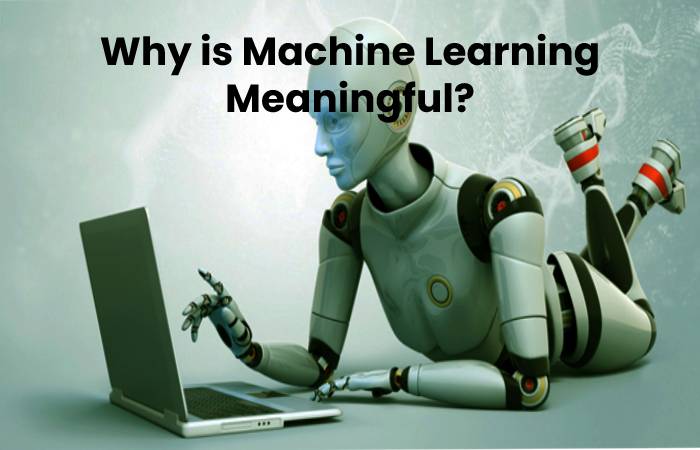Machine Learning: Machine learning (ML) is a type of artificial intelligence (AI) that allows software applications to become more accurate in predicting outcomes without being explicitly programmed. Instead, machine learning algorithms use historical data as input to predict new output values.
Recommender engines are an everyday use case for machine learning. Other popular uses include fraud detection, spam filtering, malware threat detection, business process automation (BPA), and predictive maintenance.
Table of Contents
Why is Machine Learning Meaningful?

Machine learning is essential because it gives businesses insight into customer behavior trends and operating patterns and supports new product development. Many of today’s leading companies, such as Facebook, Google, and Uber, make machine learning a central part of their operations. As a result, machine learning has become a significant competitive element for many companies.
What are the Different types of Machine Learning?
Classical machine learning is often categorized by how an algorithm learns to become more accurate in its predictions. There are four basic approaches: supervised learning, unsupervised learning, semi-supervised learning, and reinforcement learning. The type of data algorithm scientists choose to use depends on what kind of data they want to predict.
Supervised learning: In this type of machine learning, data scientists provide algorithms with labeled training data and define the variables that the algorithm should evaluate for correlations. The input and output of the algorithm are specified.
Unsupervised Learning
This type of machine learning involves algorithms that train on unlabeled data. The algorithm searches the data sets for any meaningful connections. The data the algorithms train on and their predictions or recommendations are predetermined.
Semi-supervised learning: This approach involves a combination of the two previous types. Data scientists can supply the algorithm mostly labeled as training data. Still, the model can explore the data and develop its understanding of the dataset.
Reinforcement Learning: Data scientists typically use reinforcement learning to teach a machine to complete a multi-step process for which there are clearly defined rules. Data scientists program an algorithm to complete a task and give it positive or negative cues when figuring out how to achieve it. But for the most part, the algorithm itself decides what steps to take along the way.
How does Supervised Machine Learning Work?
Supervised machine learning requires a data scientist to train an algorithm with labeled inputs and desired outputs. Supervised learning algorithms are suitable for the following tasks:
Binary classification: Splitting data into two categories.
Multi-class sort: Choosing between more than two types of answers.
Regression modeling: Prediction of continuous values.
Assembling: Combining the predictions of multiple models to produce an accurate forecast.
How does Unsupervised Machine Learning Work?
Unsupervised machine learning algorithms do not require data labeling. Instead, they sift through unlabeled data and look for patterns that can remain used to group data points into subsets. Most types of deep learning, including neural networks, are unsupervised algorithms. Unsupervised learning algorithms are suitable for the following tasks:
Clustering: Dividing a data set into groups based on similarity.
Anomaly detection: Identifying unusual data points in a data set.
Association mining: Identifying locations of items in a data set that frequently occur together.
Dimensionality reduction: Reducing the number of variables in a data set.
How does partially supervised teaching work?
Partially supervised learning works by having data scientists feed a small amount of labeled training data to the algorithm. From this, the algorithm learns the dimensions of the dataset, which it can then apply to new, unlabeled data.
The performance of algorithms usually improves when they train on labeled datasets. However, tagging data can be time-consuming and expensive. Partially supervised learning represents a middle ground between the performance of supervised learning and the efficiency of unsupervised learning. Some areas where semi-supervised learning remains used include:
Machine Translation
Learning Algorithms for Language Translation Based on a Less Than Complete Vocabulary of Words. Fraud detection: Identifying fraud cases if you only have a few positive examples. Data Labeling: Algorithms trained on small data sets can learn to apply data labels to larger files automatically.
Conclusion
Reinforcement learning works by programming an algorithm with a clear goal and a prescribed set of rules to achieve that goal. Data scientists also program the algorithm to seek positive rewards which it receives when it takes an action that benefits the ultimate goal and avoid punishments which it receives when it takes an effort that takes it further from its ultimate goal. Soccer goal. Reinforcement learning remains often used in areas such as:
Robotics: Robots can learn to perform physical world tasks using this technology.
Video gaming: Reinforcement learning has remained used to teach robots to play various video games. Resource management: Given limited resources and a defined goal, reinforcement learning can help businesses plan how to allocate resources.
Related posts
Featured Posts
Brooks Launch 8 Women
Brooks Launch 8 Women: The Brooks Launch 8 is an impartial lightweight cushioned trainer. The Launch 8 can be a quick…
What is Marketing Icon
Marketing Icon: A marketing Icon is everything in the marketing world. If you want to capture marketing budgets, marketing with…

